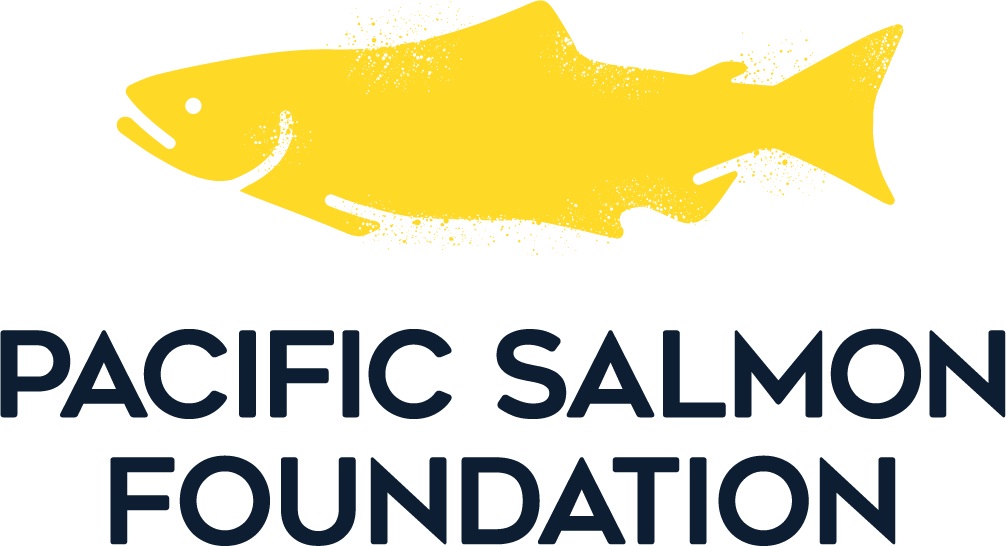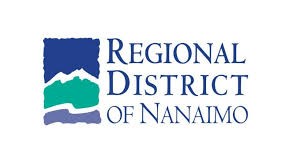Restoring the Side Channel in the Englishman River
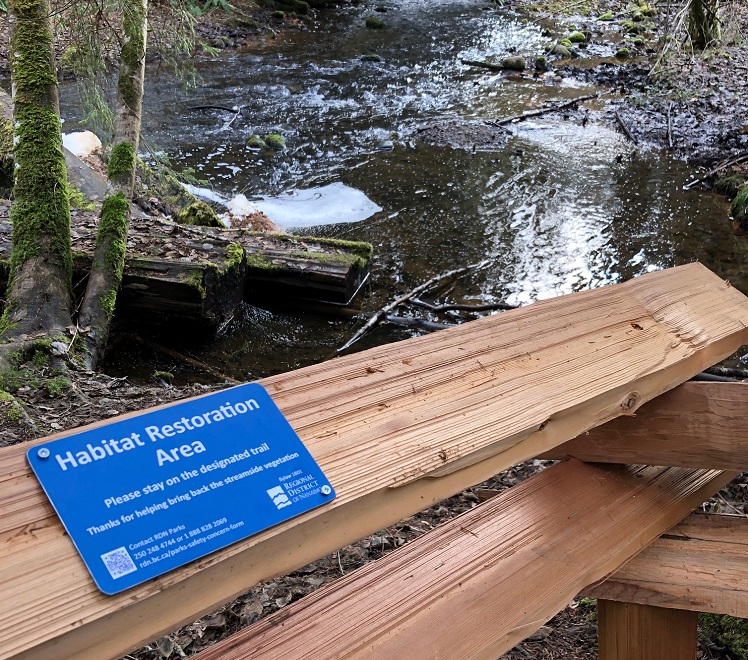 MVIHES is collaborating with the Regional District of Nanaimo (RDN) Parks Dept to restore, conserve and protect riparian habitats in Englishman River Regional Park (ERRP). The project is being led by MVIHES volunteer, James Craig.
MVIHES is collaborating with the Regional District of Nanaimo (RDN) Parks Dept to restore, conserve and protect riparian habitats in Englishman River Regional Park (ERRP). The project is being led by MVIHES volunteer, James Craig.
Since park formation in 2003 and since COVID 19 arrived, the trail network within the park has seen uncontrolled expansion with significant negative impacts along a large portion of the river’s west bank riparian edge, as well as parts of Clay Young Side Channel. The Side Channel is a very important rearing area for Coho Salmon fry and smolts. Both the number and size of trails have exploded with duplicate and unsanctioned trails close or next to the water’s edge through most of the 4.8km of river channel that flow through the park.
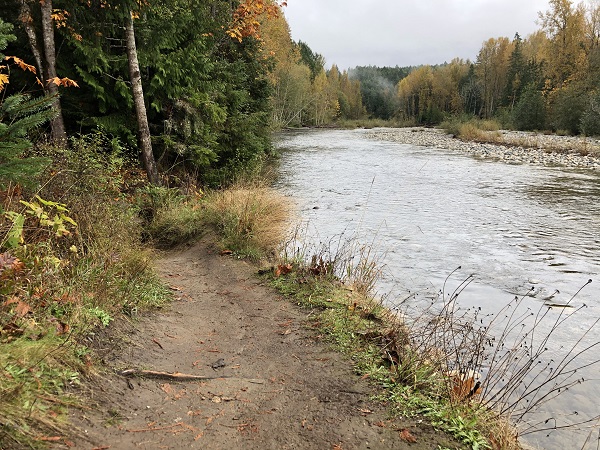
The left-hand photo shows the lack of riparian vegetation needed to stabilize the riverbank and provide shade for juvenile salmon and trout caused by the trail being right beside the river.
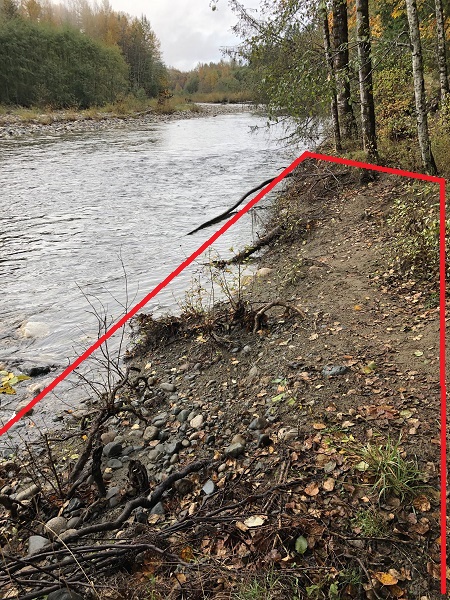
The right-hand photo shows an area of eroded riverbank (delineated by red lines) due to excessive foot traffic.
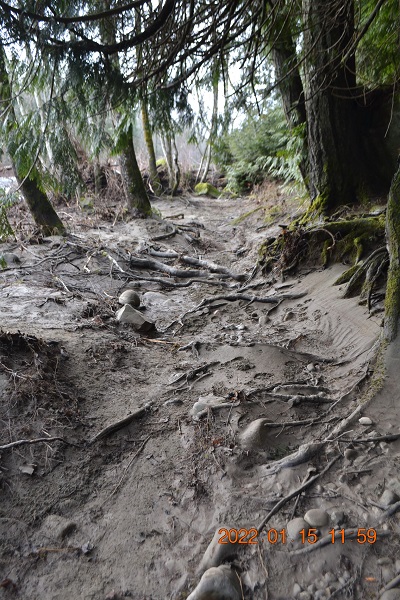
And due to the dynamic nature of the river, some trails are being destroyed by flooding as the river carves a new channel (left-hand photo). Eventually these areas will be inaccessible, putting more pressure on the remaining trails.
With a grant from the Pacific Salmon Foundation, funding from the RDN Parks Dept, and support from DFO’s Resource Restoration Unit, we are working with RDN Parks staff and contractors to:
- design, purchase and install educational signage to encourage people to stay on sanctioned trails,
- purchase and install split rail cedar fencing to direct foot traffic to the sanctioned trail along the Side Channel
- decommission unsanctioned trails along the Side Channel
- plant native shrubs and live stakes in impacted riparian areas to improve instream and overstream
vegetation and, ultimately, salmonid productivity.
We have completed installing split rail fencing in an area along the Side Channel as seen in the photos below. Isn’t it beeyootiful! Mid Island Fence Products supplied and installed the fence. The red squares highlight areas of bank that have been trampled and require restoration.
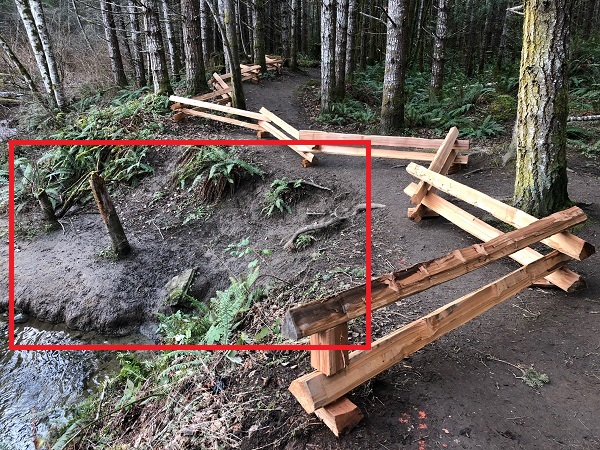
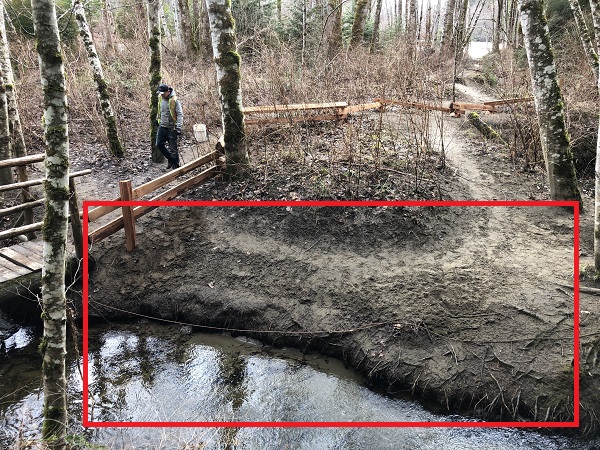
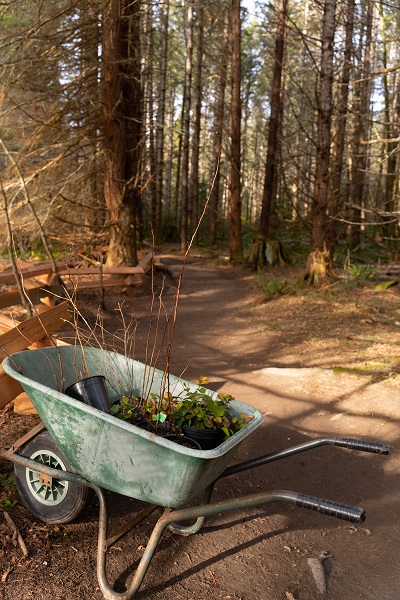
On March 16 and 17, volunteers planted 115 shrubs in 1-gallon pots into the damaged bank of the Side Channel. Plant species include snowberry, salmonberry, Pacific nine-bark, Oregon grape, red-elderberry, sword fern, and sedges. After the shrubs were planted we spread logs and woody debris around them and along the cedar fence to discourage people and dogs from climbing over the fence and walking in the planted area.
Our Action Heroes include:
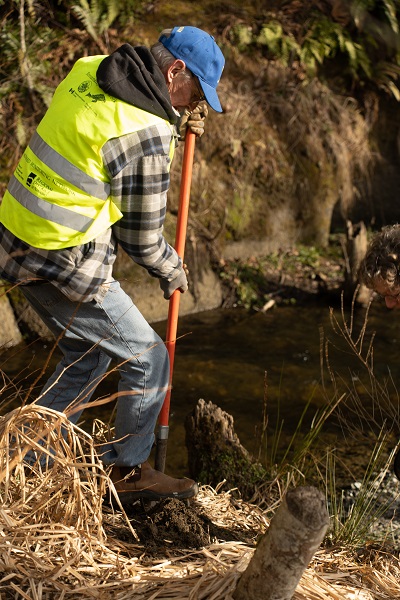
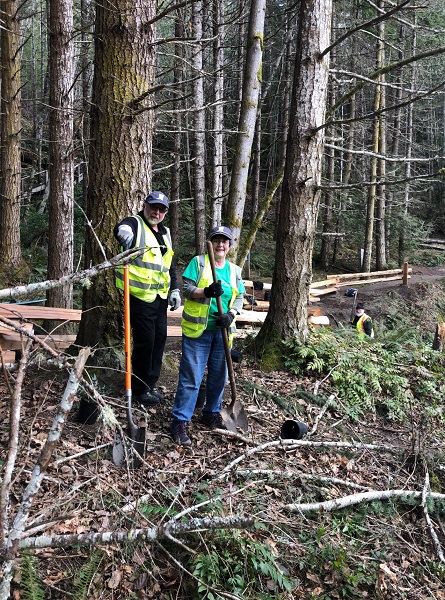
Martin Yeo Terry Baum (left) Barb Riordan (right)
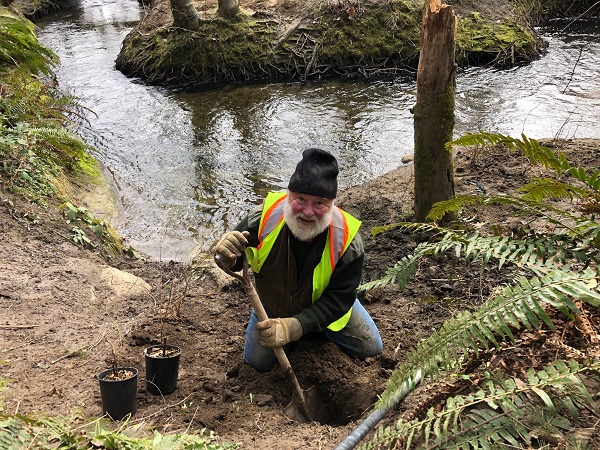
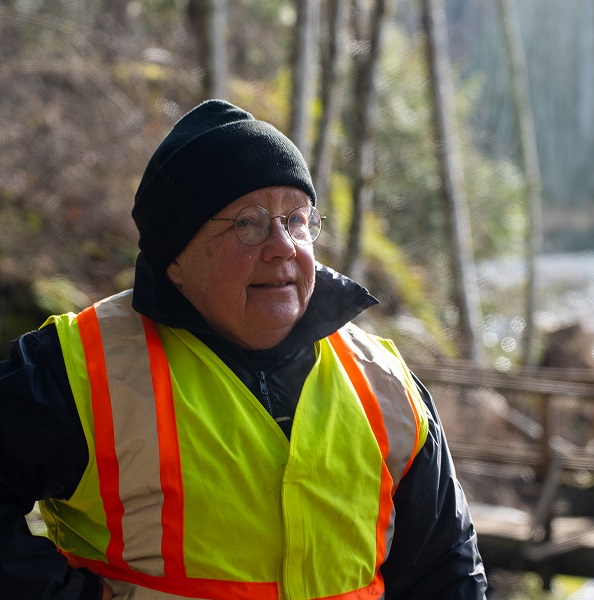
Brian Lea Liz Bredberg
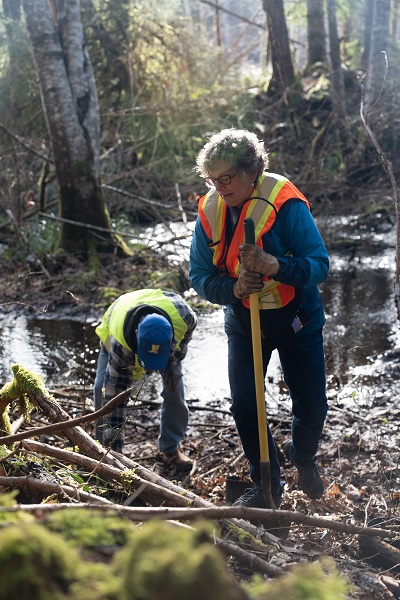
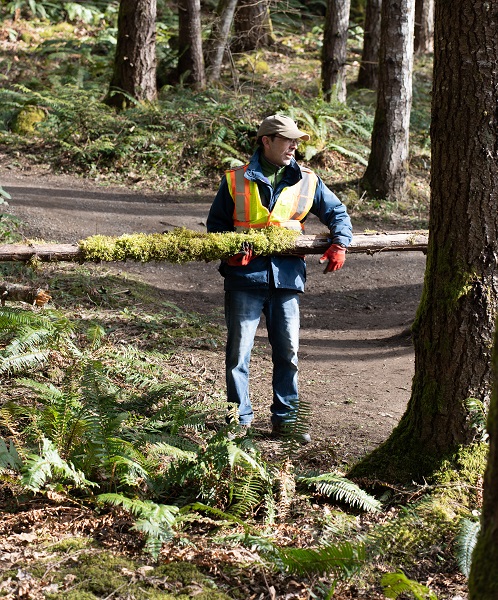
Heather Ranson James Craig, Project Leader
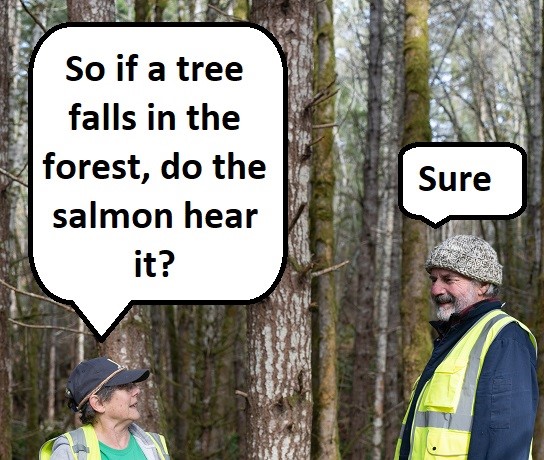
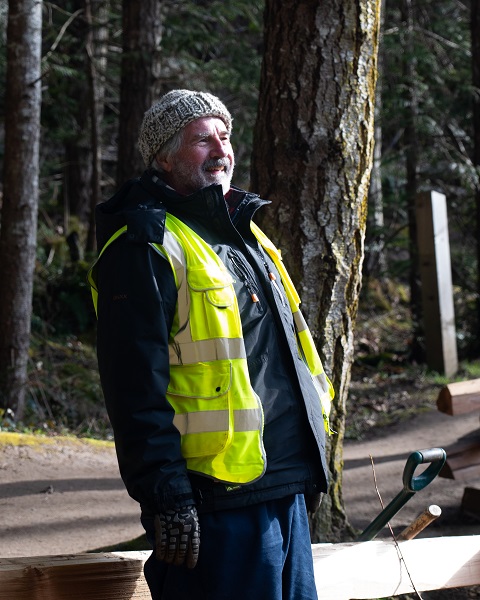
Bob Williams Time to go home
Other volunteers (who dodged the camera) were Barbara Wildman-Spencer and Marty LaCroix. Our wonderful Social Media Coordinator, Polina Iudina, took most of the photos. She also shot this awesome video.
Many thanks to our volunteers and:
Elaine McCulloch, Amy Gore, and Dave Wheldon of the RDN Parks Department,
Area G Director Lehann Wallace who acknowledged our concerns and brought forward the motion of managing trails and restoring riparian habitat to the Regional Parks and Trails Select Committee,
and the Pacific Salmon Foundation
